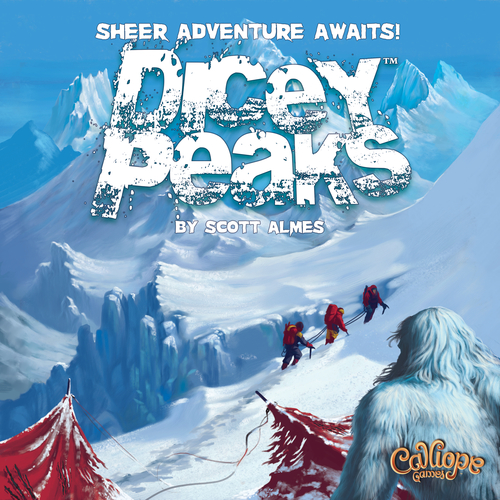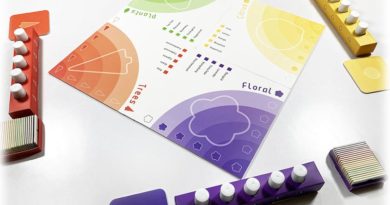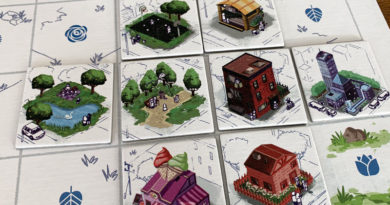Namiji board game review
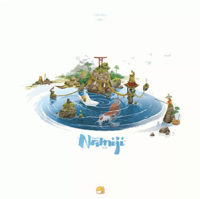
A decade ago, Funforge released a family board game called Tokaido where players are travelers crossing the “East sea road”, one of the most magnificent roads of Japan. In the game, players collect beautiful items, discover great panoramas, stop for meals, and visit temples – enjoying the journey along the way.
Matching nicely with the Japanese theme, the game offers attractive and clean visuals that draw a lot of attention. But it was the game play that had people raving about how peaceful they felt playing the zen-like game.
As if to mark a 10-anniversary of Tokaido, last year Funforge and Asmodee released a new board game called Namiji featuring similar game play with a slightly different theme. Instead of traveling a road in Japan, players are now Japanese anglers seeking a fruitful journey at sea.
Those familiar with Tokaido will feel right at home when playing Namiji. And those that haven’t yet played Tokaido, will discover a delightful game to enjoy with their family and friends.
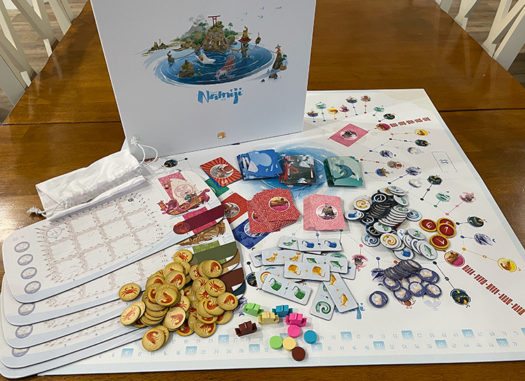
How to play Namiji
The goal in Namiji is to gain the most points by the end of the sea journey. As there are many places to stop along the way, players will also earn points in various ways.
Set up
To set up, each player gets their own boat board and places 4 Offering tokens in the spaces on the left side of their board. They take the boat and score marker matching their boat board color and place them on a starting space of the main board and 0 of the score track respectively.
The Dock card deck and Sacred Rock card deck are shuffled and placed on their indicated spaces on the board. The 12 net tokens are shuffled and placed in a face down draw pile. All the fish tokens are placed face down on the indicated board space and all the crustacean tokens are tossed in the draw bag.
The Panorama cards are sorted by type and placed in a stack with the 1 value on top and the highest value on bottom. And players are ready to begin.
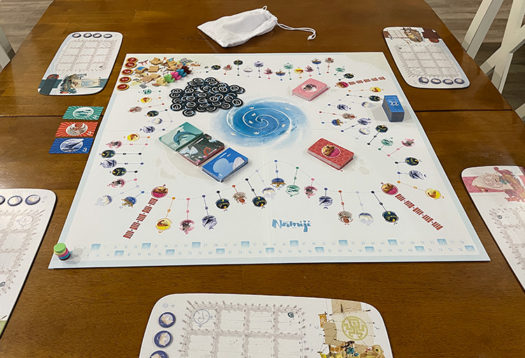
Player Turns
The game play in Namiji is super simple. One their turn a player simply moves their boat forward to any open space ahead and then takes the action of that space. They can move forward as many spaces as they would like.
The catch is that players don’t take turns in a set order (like clockwise or counter-clockwise around the table). Instead, whichever player’s boat is furthest behind on the track gets to go next!
So if the other players move far ahead on their turns, then the player in the back may be able to take multiple turns before play moves on to another player.
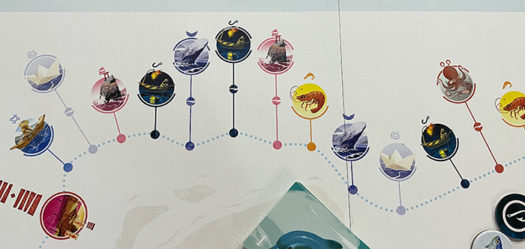
Some locations have 2 spaces for boats which are only used in 4 and 5-player games. The first player to stop there takes the solid space and the next boat that stops there takes the space with a line through it. The space with a line through it is considered to be further behind.
The different types of spaces are the following:
- Angling: Take a Fish token from the school (either face down or face up), then flip a face down Fish token face up. Choose to place it on your boat board grid or place it back in the school face up. When placing any Fish in your boat, the first Fish must go in the top left corner and all subsequent Fish must be placed adjacent to another Fish. If you complete a row or column by filling it with fish of either the same color or type, you gain the points depicted at the end of that row or column.
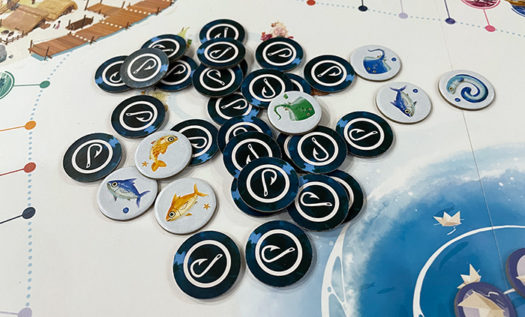
- Net Casting: Flip the top token in the Net pile and choose to either put those Fish in your boat or return it to the bottom of the pile. After placement, likewise, score a row or column if you complete it successfully.
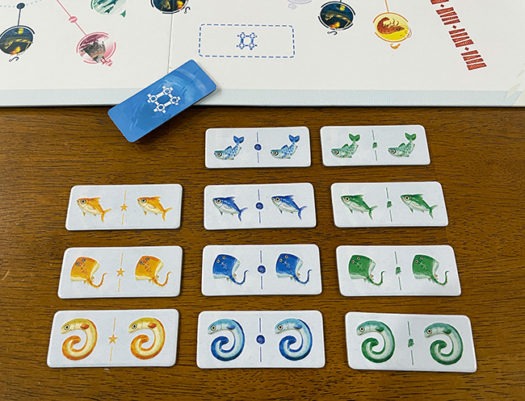
- Crustacean Trap: Draw a crustacean token from the bag. You may draw up to 5 tokens total. However, if you draw 2 Crab tokens in a single haul, you lose the catch and must put them all back in the bag. If you choose to stop drawing before getting 2 Crabs or draw all 5 without getting 2 Crabs, you keep the tokens and score 1 point for each.
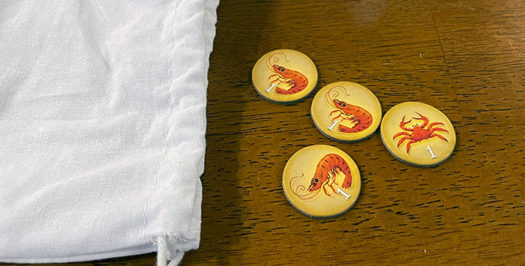
- Whirlpool: Players start with a 15-point penalty shown on the left side of their boat board. When stopping at a Whirlpool, you may place the topmost Offering token from your board into the Whirlpool space in the center of the main board. Doing so reveals a new, lower value which will be applied at the end of the game. If a player is able to place all 4 Offering tokens from their board by the end of the game, they won’t score any penalty points.
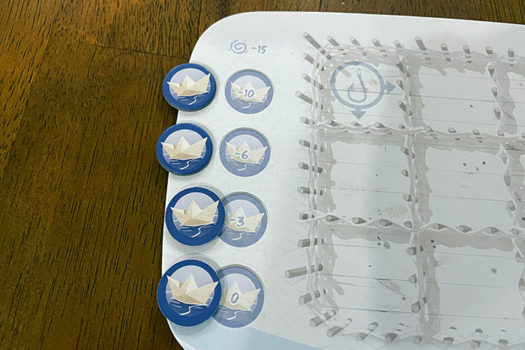
- Panorama: There are 3 different Panoramas players may build – dolphin, octopus, and whale. When stopping on one of those spaces, you take the next value card of that type, add it to your panorama and immediately score those points.
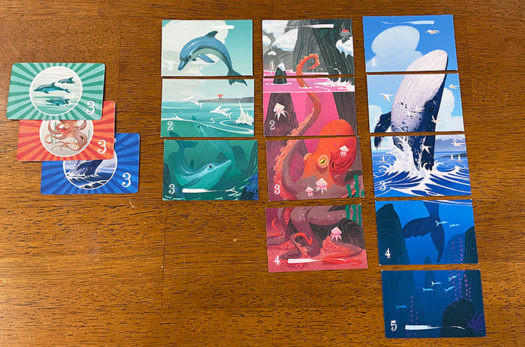
- Sacred Rock: Draw 2 Sacred Rock cards and add one to your collection. Place the other back under the deck. These cards contain secret scoring conditions to be applied at the end of the game if you achieve the condition.
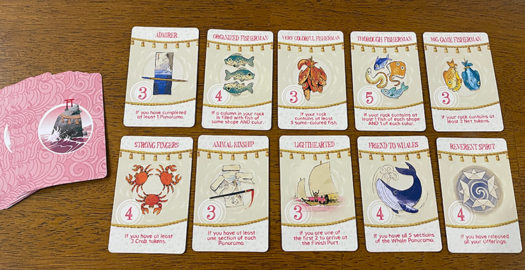
The only limitation on how far ahead a player may move their boat are the 3 Dock spaces along the route.
When a player arrives at a Dock station, they may place their boat on any of the Dock spaces. Once all players have reached the Dock, the player whose boat is closest to the sea route draws cards from the deck equal to the number of players plus one. That players chooses 1 card to keep and passes the rest to the next player in line at the Dock.
These cards either grant points directly (Meals) or provide a special bonus power to the player (Upgrades) to use during the game.
Once all players have selected a Dock card, play continues with the player whose boat is farthest from the sea route.
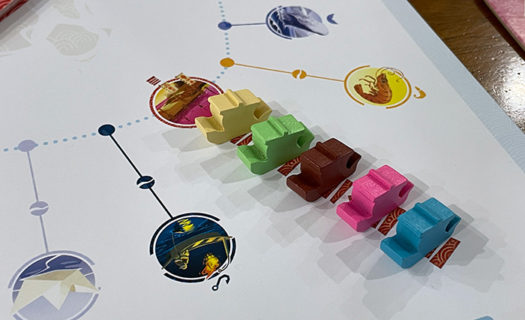
Game End
When a player moves their boat to the finish, they claim the Early Bird token with the highest remaining value. These tokens are worth 7, 5, 3, 2, and 1.
As points are awarded during the game, players move their scoring markers along the score track. So once all players have arrived at the finish line, the only remaining scoring to be done is to add on any points from successfully having complete Sacred Rock cards and apply any negative penalty points from remaining Offering tokens on a player’s board.
The player with the highest score wins!
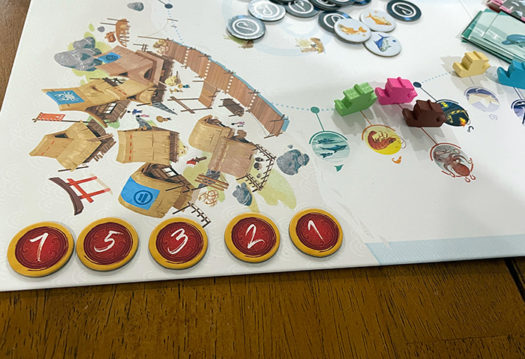
Can the whole family enjoy Namiji?
Namiji is a terrific family board game!
The game play is very straightforward and easy for players of all ages to learn and understand. Since the cards have text, players just need to be old enough to read (or team up with a player who can read the cards for them).
As we like in the best family board games, Namiji has a good balance of strategy and luck. Since players aren’t rolling dice for movement along the track, they have a lot of control over how they move along and which spaces they’ll stop on.
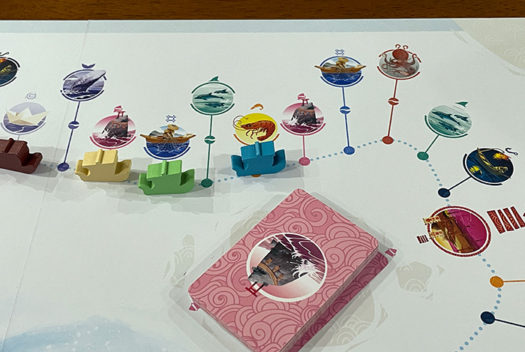
Do you want to just grab the next open space or skip over a few spaces to grab a spot you really want? Is going further worth leaving many open spaces for those trailing to take multiple turns before it’s your turn again?
Then there’s the choices of the spaces themselves. There are many to choose from. So which actions do you want to take to get the most points?
Inevitably you won’t be able to land on all of the spaces you’d like to. So you must make tradeoffs. Do you want to spend more time fishing and filling your boat board? Or do you want to grab the most panorama cards and do so quickly to get the bonus points for being the first to complete a panorama set?
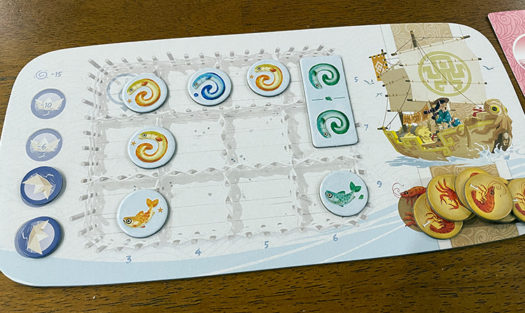
Or do you want to press your luck in drawing from the crustacean token bag? Or do you want to make more Offerings so you aren’t stuck with a big points penalty at the end of the game?
Then of course, there are the Sacred Rock spaces that will give you a chance to score bonus points from secret objectives.
And when you get to a Dock station first, where do you want to place your boat? Do you want to place it up front so you can be the first to choose from the Dock cards? Or do you place it at the back so you’re first to leave the Dock and have your choice of the next open spaces?
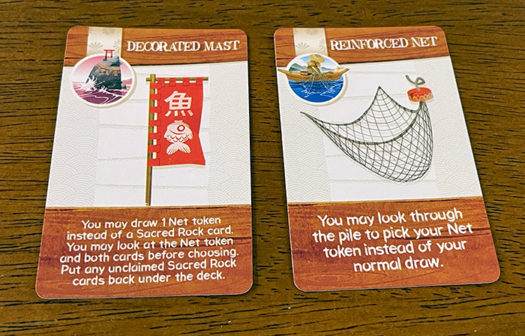
All are interesting and fun choices!
Yet many of the choices also present elements of luck – whether that being from card draws, crustacean token draws, or even face down fish draws while angling.
And it’s that balance of light strategy and luck that make it such a great family board game.
Plus, the theme is nice, the artwork is very attractive, and the components are top notch.
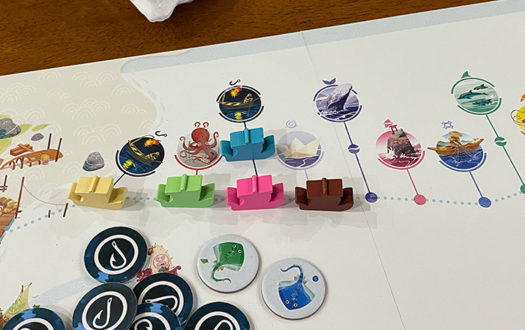
How does Namiji score on our “Let’s Play Again” game meter?
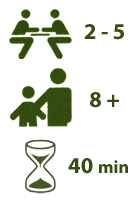 Namiji scores high on our “let’s play again” game meter because of its simple play with many choices to make and the bit of luck.
Namiji scores high on our “let’s play again” game meter because of its simple play with many choices to make and the bit of luck.
The game also plays as well at all player counts. With 5 players, the spaces seem to fill up very quickly, so there usually aren’t many gaps between boats. And with 2 and 3 players, you can’t use the second spot at some of the spaces so it again keeps you on your toes in choosing how far to move ahead on your turn to get spaces before others do.
In any case, the game flows nicely and time flys by having fun.
We definitely recommend getting a copy of Namiji for your family.
The Board Game Family would like to thank Funforge and Asmodee for a review copy of Namiji.



